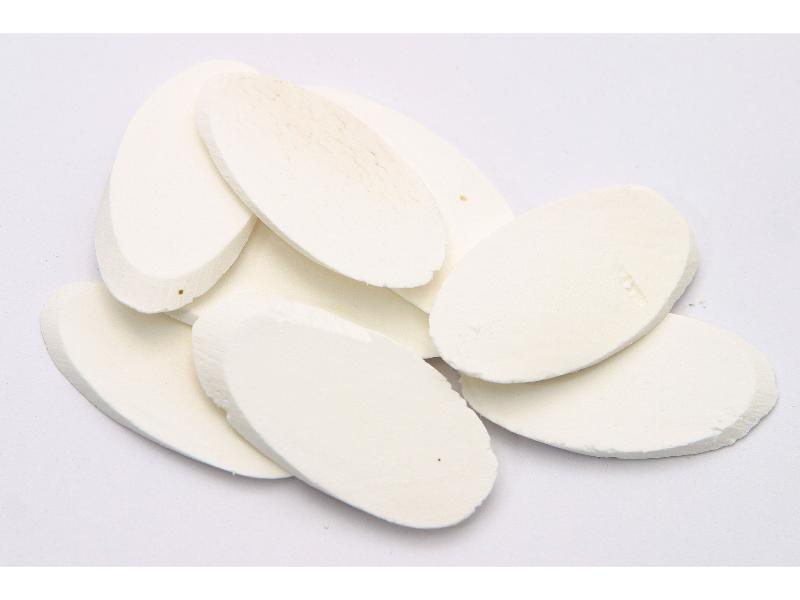Search in medicinals
Dioscoreae Rhizoma
Dioscorea [root]
山药 〔山藥〕 shān yào

Alternate English names: Chinese yam
Alternate Chinese names: 淮山药 huái shān yào; 淮山 huái shān; 薯蓣 shǔ yù; 藷薁 zhū yù; 署预 shǔ yù; 山芋 shān yù; 署豫 shǔ yù; 玉延 yù yán; 修脆 xiū cuì; 儿草 ér cǎo; 蛇芋 shé yù; 山板朮 shān bǎn zhú; 白苕 bái tiáo; 九黄姜 jiǔ huáng jiāng; 野白署 yě bái shǔ; 扇子薯 shàn zǐ shǔ; 佛掌薯 fó zhǎng shǔ
Kingdom: Plant
Origin in PRC Pharmacopoeia: Dioscorea opposita Thunb. (PRC Pharmacopoeia)
Origin in unofficial sources: Dioscorea opposita Thunb.*; Dioscorea japonica Thunb.; Dioscorea deltoidea Wall.; Dioscorea batatas Decne. [= D. opposita Thunb.]
Use: Medicinal and alimentary
Category: Supplementing agents / Qì-supplementing agents
Properties: Sweet; balanced.
Channel entry: Lung, spleen, and kidney channels.
Actions and indications:
- Supplements the spleen, boosts qì, and nourishes yīn: Spleen-stomach vacuity patterns.
- Supplements the lung and kidney: Lung and kidney vacuity patterns.
- Secures essence and checks vaginal discharge: Seminal emission; frequent urination; persistent clear thin vaginal discharge.
- Additional uses: Shān yào may be used to treat dispersion-thirst due to yīn vacuity with internal heat manifesting in thirst with copious fluid intake and in frequent urination. It is used here because it boosts qì, nourishes yīn, engenders liquid, and allays thirst. Shān yào is often combined with Shēng dì huáng (生地黄 Rehmanniae Radix Exsiccata seu Recens, dried/fresh rehmannia [root]), Huáng qí (黄芪 Astragali Radix, astragalus [root]) and Tiān huā fěn (天花粉 Trichosanthis Radix, trichosanthes root) for dispersion-thirst. Finally, shān yào is also used topically for frostbite.
Dosage and method: Oral: Decoct (9–18g) or use in pills and powders. Topical: Apply crushed.
Warnings: Because of its yīn-nourishing and astringent qualities, shān yào should not be used alone in exuberant dampness with center fullness or when there is food stagnation.
Product description: This is a cylindrical rhizome about 20 cm long and 1.3–4 cm in diameter, with flat ends. The exterior surface is smooth, chalky, and white, with vascular bundles appearing as faint, fine markings. It is hard and heavy and breaks to reveal a white granular, chalky fracture. The decocting pieces are oblique slices 1–3 mm thick. Their cut edge is smooth, white and chalky, occasionally with visible brown vascular bundles. When stir-fried in earth, the slices turn a slightly mottled yellowish-brown.
Quality: Firm straight highly farinaceous pure white rhizomes are the best.
Production area: Hénán, Húnán, Húběi, Shānxī, Guìzhōu, Yúnnán, Shǎnxī (Shaanxi), Jiāngsū, Zhèjiāng, Jiāngxī, Sìchuān.
Etymology: Shān yào 山药 literally means mountain medicine.
The original name shǔ yù 薯蓣 shǔ yù became taboo in the Táng dynasty because 蓣 was too similar to 预, a character appearing in an imperial clan name.